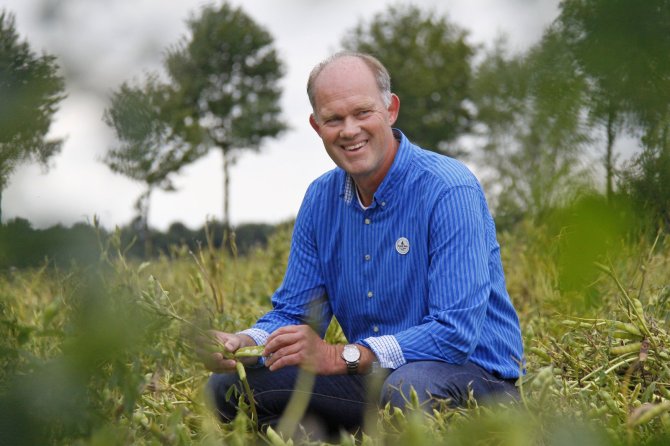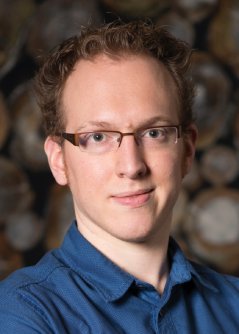
News
Six WUR plant researchers are on the list of most cited scientists
Six researchers from the Wageningen University & Research (WUR) Plant Sciences Group are listed in Clarivate’s ranking of the most cited scientists worldwide. This year’s Clarivate Highly Cited Researchers list includes 6,602 scientists worldwide, 207 of whom are Dutch researchers. In total, 26 scientists from WUR are among the most cited researchers in their field.
The listed researchers from the Department Plant Sciences are botanists Gerco Angenent, Ken Giller and Martin van Ittersum, entomologist Arnold van Huis (who was listed for the first time), bioinformatician Marnix Medema and nematologist Wim van der Putten. Marnix Medema (1986) is one of the younger scientists on the list. In contrast, Martin van Ittersum (1963), who is listed for the seventh time, is practically a veteran.
Proud
“It was only when more attention was drawn to it in 2017 that I realised exactly what the list represented and that it was something to be proud of”, says Van Ittersum. Two years earlier, he was one of the first people from Wageningen to appear on the list. Many of the publications by researchers on the Clarivate Highly Cited Researchers list are among the 1% most cited articles in their field and have been cited by fellow scientists over the past decade. Van Ittersum: “That indicates that many colleagues read and use your work.”

Van Ittersum’s articles discuss various topics that can be traced back to the world food issue and sustainable production: the finite nature of phosphate, yield gaps (the difference between actual and potential yields), organic agriculture or, for example, whether Africa can produce enough food on its own. “The articles are often related to subjects that are somewhat urgent and regularly make the news. And they combine new methods with analyses.”
International team spirit
Van Ittersum explains that he is at most a co-author of many of the more than 200 articles that bear his name. “Of course, such a number is only possible because you publish together with others, with PhD candidates, postdocs and colleagues from around the world with whom you collaborate on projects. That global cooperation often helps to make your work more visible.”
That also applies to Marnix Medema. The fact that he is on the list for the second time this year is, in his opinion, also due to the growing international team spirit in his field (bioinformatics). “Some of the frequently cited articles were collaborations with dozens or even hundreds of scientists worldwide. They contributed to initiatives we have set up to standardise data in our field and make it accessible.”

He considers his inclusion on the list to be “a nice compliment for my research team, who” – he emphasises – “have really done a fantastic job in recent years.”
Medema spoke about the content of his papers that were most frequently cited. “They describe software and databases for analysing specialised metabolism in bacteria, fungi and plants. The associated molecules act, for example, as weapons, signals or specialised molecular tools. These tools make it easier for scientists worldwide to understand the molecular mechanisms of interactions between organisms, but also to discover new antibiotics or plant protection products, for example.”
Pressure to publish
“I don’t experience much pressure to publish”, says Medema, “but that’s also a conscious choice. I try to look at lists as little as possible and not let myself be influenced too much by, for example, the point system that is part of the tenure track at Wageningen. I generally enjoy researching and writing articles, but publishing should never be a goal in itself. Other motivations for writing up the research are much more important: wanting to communicate your results and ensuring that the research has an impact on your field and on the wider world.”
Who has time to read all the articles we write together?
Speaking about the pressure to publish, Van Ittersum says that it does make a difference whether you are at the beginning of your career or further along. “In the latter case, publications – with the necessary time and energy – actually come about of their own accord. But I sometimes wonder: shouldn’t we publish more selectively? Shouldn’t we focus on a smaller number of more comprehensive articles? Who has time to read all the articles we write together?” He sees a shift from frequent publishing to greater impact. This means that the work not only appeals to other researchers, but it also has implications for education and society.
Gender gap
The citation index says something about the impact a scientist has, but there is also a gender gap: women are generally cited less often. And that is not just because they are much less represented in academia. British journalist Caroline Criado Perez explained this in her book, Invisible Women: Exposing Data Bias in a World Designed for Men. The share of women in Wageningen is growing compared to last year (now five out of 26), but unfortunately it is still lagging behind in the Department Plant Sciences.
Finally, the Netherlands is sixth in the list of countries where the most cited scientists come from, after the US, China, UK, Australia and Germany. Canada, France, Spain and Switzerland round out the top ten.